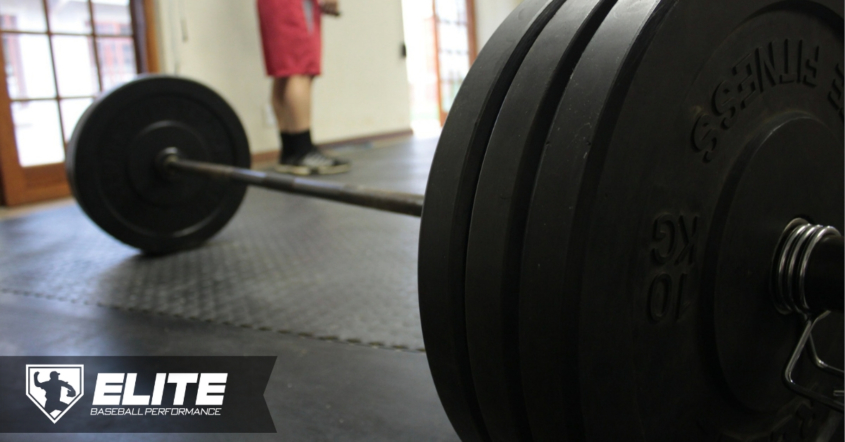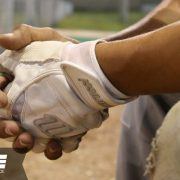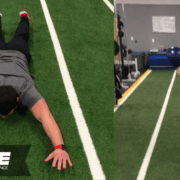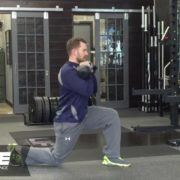Is Heavy Lifting Good For Pitchers?
If you look around social media, you’ll see that more baseball pitchers are lifting “heavy.” This is, in general, a good trend – pitchers were coddled and treated with fragility for years.
But, pitchers are different – different than position players, and they’re different than other athletes in general.
But, how different are they? Is heavy lifting good for pitchers, in the same way that it’s good for other athletes? Let’s discuss.
First: Is Lifting Heavy Even A Real Distinction?
Honestly, it’s a stupid, often meaningless term.
As far as I can tell, it simply means that a person tries hard to lift weights. If you lift consistently and try hard, well, then by default you’ll get stronger, weights will get heavier, and there you go – progressive overload eventually leads to heavy weights.
Really, “I lift heavy” just means “I do what I’m told and I try to get stronger in a progressive manner.”
For players who have been in a decent college program, they get this by default. Most large programs with good strength coaches have their baseball players – including pitchers – do the big compound lifts like chin ups, squats, deadlifts, etc.
One who defines himself as “a pitcher who lifts heavy” is really just a pitcher who enjoys lifting and pushing himself more than others. The heaviness of a baseball workout program is partly just a choice to keep progressing.
Remember: if you can only squat 150lbs, you can’t just choose to lift heavy one day and squat 315. It takes time.
What’s actually important, though is this: When a pitcher draws the line.
When Lifting Heavier Becomes Riskier than the Reward
We need to look at the big picture.
The problem is, what you’re doing today may not be hurting you precisely today. But, it may be eating away at you. Ask a career distance runner – his knees felt fine at 20, 30, 40, maybe even 50. But by 55, he has no cartilage left and is in chronic pain.
Missing a rep trying to get up a 455lb deadlift today may not hurt anything but pride. But, here’s what it’s doing to an arm that’s extremely valuable to a pitcher:
- Passing tremendous strain through the forearms, elbows,
- Passing tremendous strain through the biceps tendon (which attaches to the labrum)
- Passing tremendous strain through the back, shoulders, spine
- Building a large, thick upper back that may not be good for shoulder mechanics and flexibility
Now, the SAID principle states that the body responds to the demands placed upon it. We know this to be true – do enough push ups, and your chest will grow bigger and stronger to do the job more efficiently and protect the tissues from being damaged by the activity.
Specific
Adaptations to
Imposed
Demands
If we want our pitching arm to be stronger and more resilient to injury, we have to impose stress on them, and weightlifting is a great way to do this. Think about rock climbers – they have the strongest forearms and fingers on the planet, because they impose the task of clinging to tiny holds on the face of a sheer rock.
Yet, rock climbers have injuries – though fiercely strong, forearm muscles tear and tendons pop. The body must recover and keep stresses below the failing threshold of the weakest tissues in the chain. The very thing that made them strong also breaks them down.
When Is Heavy Too Heavy?
I’ve worked with many, many young baseball and softball players as a full-time strength coach. It frustrates me that countless young kids imitate college players and the clients of very green trainers; they want to work out exactly as they do, because it looks cool on Instagram.
Just because it may work for one player (or appear to be working today) does not mean it’s good for that player long-term, or good for others at all.
Bro! Pitchers should lift heavy, bro!
Before I tell you what I think is too heavy, I’m going to tell you: I’ve seen firsthand how my strength training programs have affected hundreds of young pitchers, unlike many internet-only trainers. I adjust workouts each month in my academy, especially as their throwing volume changes. It’s complex and learning how to optimize an online baseball workout in person is important.
I’ve seen firsthand how complaints of elbow pain decreased when I lowered the volume of heavy deadlifting, overhead pulling, and farmers carries. All are great exercises to build strength, but can make throwing arms angry.
Yet, getting strong no matter your position in baseball is important. There are three phases that determine if you need to keep pushing, or start backing off to maintain strength and reduce injury risk.
Foundation Phase: Large Upfront Gains
Athletes with a low training age (0-3 years) are going to make large performance gains – including throwing harder – by getting stronger and putting on muscle, provided their flexibility doesn’t suffer too much.
This means getting big lifts up to:
- Squat: 1.0x bodyweight on the bar for 8 reps
- Romanian Deadlift: 1.0x bodyweight on bar for 12 reps
- Trap Deadlift: 1.5x bodyweight on bar for 6 reps
- Front Squat: 1.0x bodyweight on the bar for 8 reps
- Barbell Hip Thrust: 2.0x bodyweight on bar for 8 reps
- Chin Ups: 8 reps from full hang with no assistance
Johnny Wholstaff, a fictional pitcher who is 16 years old and weighs 160lbs, should hope to be able to:
- Squat 160 for 8
- RDL 160 for 12
- Trap Deadlift 240 for 6
- Front squat 160 for 8
- Hip Thrust 320 for 8
- Do 8 chin ups.
These are good benchmarks for a pitcher aged 13-21 with a low training age, and he will see good results from reaching these milestones. Use them as a guide, not as an absolute.
Intermediate Phase: Higher Weights, Diminishing Reward
Once a pitcher can check off all the above big lift benchmarks, usually after 3-5 years of training, he’ll enter an intermediate phase where he is:
- Pretty strong
- Pretty good at lifting, as far as technique is concerned
- Still seeing performance increases, but at a lower rate
We are all aware of diminishing returns, and they start to show up here – we’re now fighting for smaller incremental gains in performance. That’s okay! – keep going. Now, we’re building to fill our strength and power “bucket.” Go beyond the recommended weights we had before.
But, that bucket is getting full…
In the graphic above, courtesy of Mike Reinold, he was explaining that athletes need a routine that establishes balance – they need strength, but not at the expense of other things like arm care, or good mechanics.
Likewise, pitchers need to throw and have good mechanics, but can’t throw so much that they leave other areas underdeveloped or bodies over-stressed.
As the strength bucket fills, injury risk increases, as tissues are getting stressed much higher to squeeze out ever-smaller performance gains.
The Maintenance Phase
Okay. Now, you’re a high school senior, college or pro pitcher. You’ve got a moderate training age (3-6 years) and you’re pretty strong. You weigh 175-220 lbs. If you can lift the goal weights we discussed, it’s time to start allocating more of your time to different things.
Why? Because…
- You’re strong enough
- Injury risk is high
- Performance gains through weightlifting are now very low
- The risk vs reward is no longer worth it
You deadlift 445lbs. You want to get to 495. Okay – why? What will that do for you? Add more velocity? Probably not. Improve your slider, curve or changeup? Nope. Improve your command? Nope.
Okay. So why? To be the best at weightlifting? To earn a pride button for being the strongest pitcher in the bullpen?
Personally, I reached this phase at age 21, but didn’t know it. I realized it at age 25 and when I did, I started allocating more time to other things, other than simply lifting heavy weight. I had filled my strength bucket and making it overflow wasn’t going to make me a better pitcher.
Are you a powerlifter, or a pitcher? Once you can do the following, it might be time to move on and start allocating less time to strength work and more time to other types of training:
- Trap Deadlift or Regular Deadlift: 405lbs x 3 reps
- Squat: 365 x 5 reps
- Front Squat 335 x 5 reps
- Chin Ups: 15 bodyweight reps, which is equal to around 5 reps with 50 pounds added
- Barbell Hip Thrust: 405lbs for 8 reps
- Farmers walks: 40 yards with 120lbs per hand
- Bench Press: simply not an important measure of strength for a pitcher.
My Recommendations For Pitchers:
Pushing to ultra-high weights on any given lift will have a negligible effect on pitching prowess. It will almost certainly make your arm irritated if you’re lifting that way while pitching at even a moderate volume. And, the risk versus reward simply is not there.
Lifting consistently and progressively (which ultimately means heavy) is great. Yet, it’s important to know when to say when.
Key Takeaways
- Get a program from a trainer who has played the game him or herself, or has worked with a lot of players in real life.
- More isn’t always better, and there is a definite point of diminished returns that affects risk and reward.
- Exercises should fit the athlete, not the other way around.
- When returns are so diminished that they pale in comparison with the risks, then it’s time to back off, move on, or choose new exercises
- Realize that the goal is the sport, not being the best at lifting. Softball workouts, baseball workouts – it doesn’t matter. Train for your sport first.
- There are countless ways to build explosiveness without the Olympic Lifts, which are sometimes deemed “essential.” No exercise is essential – exercises are merely tools and multiple tools can do the same job.
- Be careful of the monkey-see, monkey-do that is all too prevalent on social media.
Want More Pitching Help?
Check out two of my best resources, both of which are completely free:
How to Throw a Hammer Curveball YouTube Video Course
Go here to check out my free online course hosted as a playlist on YouTube.
The Pitchers Development Checklist
Go here to get the free checklist to figure out if the pitcher in your life is doing everything he should be to reach the next level.
Thanks for reading. Leave a comment below!
Dan Blewett
Latest posts by Dan Blewett (see all)
- What Causes A Mental Meltdown in Baseball? - September 3, 2019
- Two Common Curveball Mistakes Pitchers Should Avoid - July 30, 2019
- Is Heavy Lifting Good For Pitchers? - July 2, 2019











I have noticed you don’t monetize elitebaseballperformance.com, don’t waste your traffic, you
can earn extra cash every month with new monetization method.
This is the best adsense alternative for any type of
website (they approve all websites), for more info simply search in gooogle:
murgrabia’s tools
This is bad advice. Pitchers should not lift weights. Pitching is a rotational movement and it’s best to train your core. I don’t mean situps and planks but rotational movements. If one follows the principles of biomechanics and how the body actually moves, one would see how traditional weight training is actually detrimental to throwing and pitching speed. Throwing is a fast movement and weight lifting is typically a slow movement which affects fast twitch fiber conversion to slow twitch.
Most of what you say is false. It is true that pitching is mostly rotational and most lifting works on the sagittal plane. That’s about as much as you got right, here.
However, 1. muscle does not “convert” from one twitch to the other despite the fact that different training methods affect different twitch types that are already there at a certain ratio, 2. the cap on how much explosivity can be developed in the human body is much lower than the cap on absolute strength, because the first is bottlenecked by your nervous system in addition to muscle mass, and 3. the sports specific training is the training which allows the athlete to recruit that absolute strength to an increasing degree in sports specific movements.
A pitcher does not squat in his sport, yet his throwing technique recruits the very same musculature in a throw; the more absolute strength is there to be recruited as a result of barbell resistance training, the higher the potential of power output in the throw (assuming the athlete practices enough to make use of it). The biomechanics of it is not worked in the gym – and never has been – but on the field.
Would increasing explosivity be more beneficial? Yes, but explosivity is unfortunately one of those traits that some just have and some don’t, and those who have it unlock the full potential of it via explosive weight training. The fact that your explosivity is (relatively) set in stone is not a reason to forego becoming as strong as you can, and there is literally no downsides to ANY athlete in being stronger. No sports select for weakness as an advantage. Only a moron would argue that becoming stronger is harmful; a broken narrative passed on by trainers who don’t know how to get their athletes strong and by athletes who eschew having to do the hard work of getting strong.
Actually you are both wrong, but Fee Bee more so.
Fee Bee, you make the mistake of thinking that “slow/fast twitch” relates to movement speed, this tells me that you are either not a certified strength coach or a poorly educated one. “Slow/Fast Twitch” relates soley to the energy system used to cause a muscle contraction i.e. Aerobic vs. Anaerobic. Weight lifting, done properly, is an explosive type exercise. This is beneficial to the development of Fast Twitch Fibers/Motor Units i.e. Anaerobic.
Olinblo, your mistake is based on the old assumption that you are “born” with a certain fiber distribution. While this may be true in a very broad sense, research shows that fibers/motor units can change based on the demands placed on the muscles. This isnt really new info as this fairly through review from 2001 demonstrates:
https://academic.oup.com/ptj/article/81/11/1810/2857618